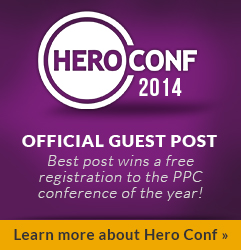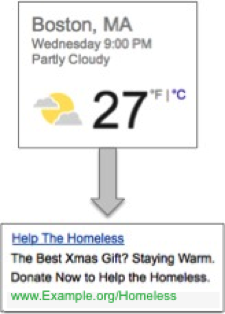 Editor’s Note: This article is a part of our Hero Conf guest post contest. Based on a combination of pageviews and editorial review from the PPC Hero writing staff, a winner will be chosen from the finalists we post throughout the week. Today’s post comes to us from Ariana Wolf (@ArianaWolf), a search strategist for 90octane.
Editor’s Note: This article is a part of our Hero Conf guest post contest. Based on a combination of pageviews and editorial review from the PPC Hero writing staff, a winner will be chosen from the finalists we post throughout the week. Today’s post comes to us from Ariana Wolf (@ArianaWolf), a search strategist for 90octane.
“Holy jumble! Where’s the hope of the world now?” – Robin of Batman & Robin
Heroes change the world. They capture hearts with grand gestures of selflessness and gallant efforts to overcome the world’s toughest obstacles and adversity. I know heroes. I manage PPC campaigns for nonprofit organizations doing good work every day to make the world better.
What does that make me? Their loyal and resourceful sidekick, lurking in the shadows (of my computer) with a perky relentlessness (when it comes to PPC optimization).
I’d like to share a little story of good vs. evil – a story with a lesson in overcoming obstacles. What was the good? Achieving a 483% increase in year-over-year online donations for a national nonprofit organization. What was the evil? A flat PPC budget.
“Holy hypothesis!”
Let’s set the stage. It was holiday season – the crucial donation window for most nonprofits. Competition was high. CPCs had been reaching over $20 on high volume, high competition terms even during the off-season. With too little budget to run a nationwide PPC campaign for my favorite charity, I knew I had to get creative.
I grabbed my partners, and we started how we usually do – by identifying target personas and lower cost keyword sets to experiment with. Then we assessed proven ways to stretch our budget, from ad scheduling during historically profitable times of day and prioritizing high quality score keywords to running on less expensive search engines and testing less expensive ad formats. But we’d have to go deeper if we wanted to target donors across the U.S.
“Holy resourcefulness!”
That’s when we turned back to our personas and asked how we could further refine our targeting. We knew, for example, that Christians and Catholics were subsets that our ads resonated with. So, how could we increase the likelihood that our message would reach those searchers? It was time to dig deeper and find data to support campaign-by-campaign optimization.
Thanks to amazing search engines, I dug up some great data from The U.S. Religion Census and The Association of Religion Data Archives on U.S. metro areas and states that skew more heavily Christian and Catholic. Now I knew that my campaign targeting my Christian persona would quite likely achieve greater success by geo-targeting certain areas, while my Catholic persona messaging would resonate in other areas.
It was a good start, but we weren’t done yet! Sticking with this Christian and Catholic example, we then cross-referenced religion statistics against high rates of homelessness in different states, which tied directly into our messaging. The thinking was that people in areas with high rates of homelessness might have added awareness about the issue and a greater desire to alleviate it. I pulled an annual report from the National Alliance to End Homelessness with homelessness rates by geographic area.
“Holy finishing touches!”
With a simple Excel chart and some handy conditional formatting I filtered the data to narrow my geographic targeting. Now I could look at targeting a set of higher population Nielsen media markets that had both relatively high rates of homelessness and a higher than average concentration of Christians or Catholics. Here’s a snapshot of what it looked like:

We replicated this process across other personas and then moved onto our messaging. Now that we had a better chance of reaching our audience, what were we going to say to them? How would we stand out on the search page, given the extremely high competition for clicks!
We did what we normally would, tailoring messaging in each group and creating specific themes to resonate with each persona. We then took a unique approach and added review extensions highlighting trustworthiness for those who weren’t familiar with the organization. We also implemented a dynamic date countdown script for some of our Google ads, adding a sense of urgency.
We didn’t stop there. To make our PPC dollars work as hard as they could, we looked at our targeted geographic areas and determined which were likely to drop below a certain temperature during the winter months when campaigns were running. That allowed us to add an AdWords bid by weather script into the mix, too. Now we could use different messaging for our targeted groups and bid higher in certain geographic areas when it was cold outside, highlighting the need to help the homeless when weather conditions were painful.

“Holy floodgate!”
So, was all of that research and detailed targeting work worth it? The answer is SHAZAM! Our relentless approach to refinement made our ads stand out from the crowd. With a 483% year-over-year increase in the nonprofit’s charitable donations from PPC on a flat budget, I’m happy to say that good prevailed, and this sidekick’s work was done.
At least until next time!



